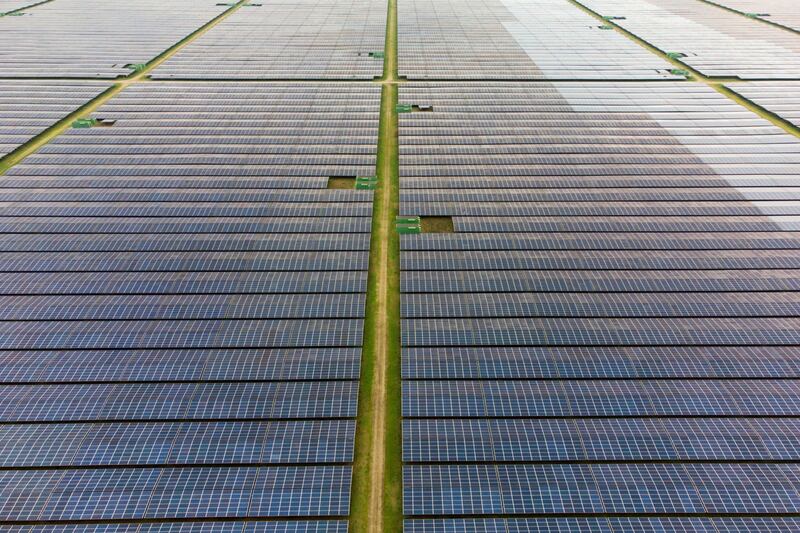Russia's military offensive in Ukraine will affect long-term energy demand and accelerate the shift to renewable energy as countries boost domestic supplies, oil company BP has said.
The Ukraine war will slow global economic activity by about 3 per cent by 2035, compared with BP’s previous forecast, as a result of commodity price shocks arising from the conflict, the company said in its 2023 Energy Outlook on Monday.
BP reduced its 2035 oil and gas demand forecast by 5 per cent and 6 per cent, respectively, under its New Momentum scenario, which is based on current global energy transition plans.
These effects are most concentrated in emerging Asia and the EU, both of which currently have significant reliance on oil and natural gas imports, said BP.
“The increased focus on energy security triggered by concerns about energy shortages and vulnerability to geopolitical events is assumed to cause countries and regions to strive to reduce their dependency on imported energy and instead consume more domestically produced energy,” said Spencer Dale, BP’s chief economist.
“It also gives greater incentive to improve energy efficiency, reducing the need for all types of energy.”
In the scenarios where world governments significantly tighten climate policies, oil is still expected to play a “major role” over the next decade with world demand reaching 70 million to 80 million barrels per day in 2035, compared with about 100 million bpd currently, said BP.
The total consumption of fossil fuels declines in all three scenarios over the outlook.
“This would be the first time in modern history that there has been a sustained fall in the demand for any fossil fuel.”
Meanwhile, the share of renewables in the global primary energy system is projected to increase between 35 per cent and 65 per cent by 2050, compared with 10 per cent in 2019, driven by falling costs and government policies.
Last year, the US passed the Inflation Reduction Act (IRA), which offers a series of tax incentives on wind, solar, hydropower and other renewables as well as a push towards electric vehicle ownership.
The policy shift will result in a more than four-fold increase in solar and wind deployment in the US by 2030, from 2019 levels, said BP.
Business Extra in Davos: Energy in crisis and transition

The demand for hydrogen will increase to 4 million tonnes per annum (mtpa) in 2030 and 26mtpa in 2050, the report said.
Hydrogen incentives under the IRA are “supportive” of green hydrogen, which is expected to account for about 60 per cent of US low-carbon hydrogen in 2050, compared with the previous forecast of around 25 per cent.
“The IRA has significant implications for the US and potentially for the rest of the world, but it also serves to highlight the scale of policy support likely to be necessary to achieve … faster [and] deep, decarbonisation pathways consistent with meeting the Paris goals,” Mr Dale told attendees during a webinar.
The global energy crisis triggered by Russia’s invasion of Ukraine could “hasten” the transition to renewable energy, the International Energy Agency said in its World Energy Outlook last year.
Investment in renewable energy needs to double to more than $4 trillion by the end of the decade to meet net-zero emissions targets by 2050, the agency said.






